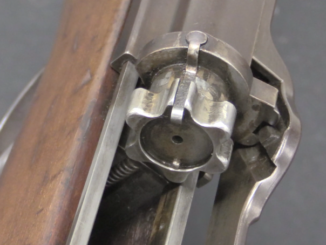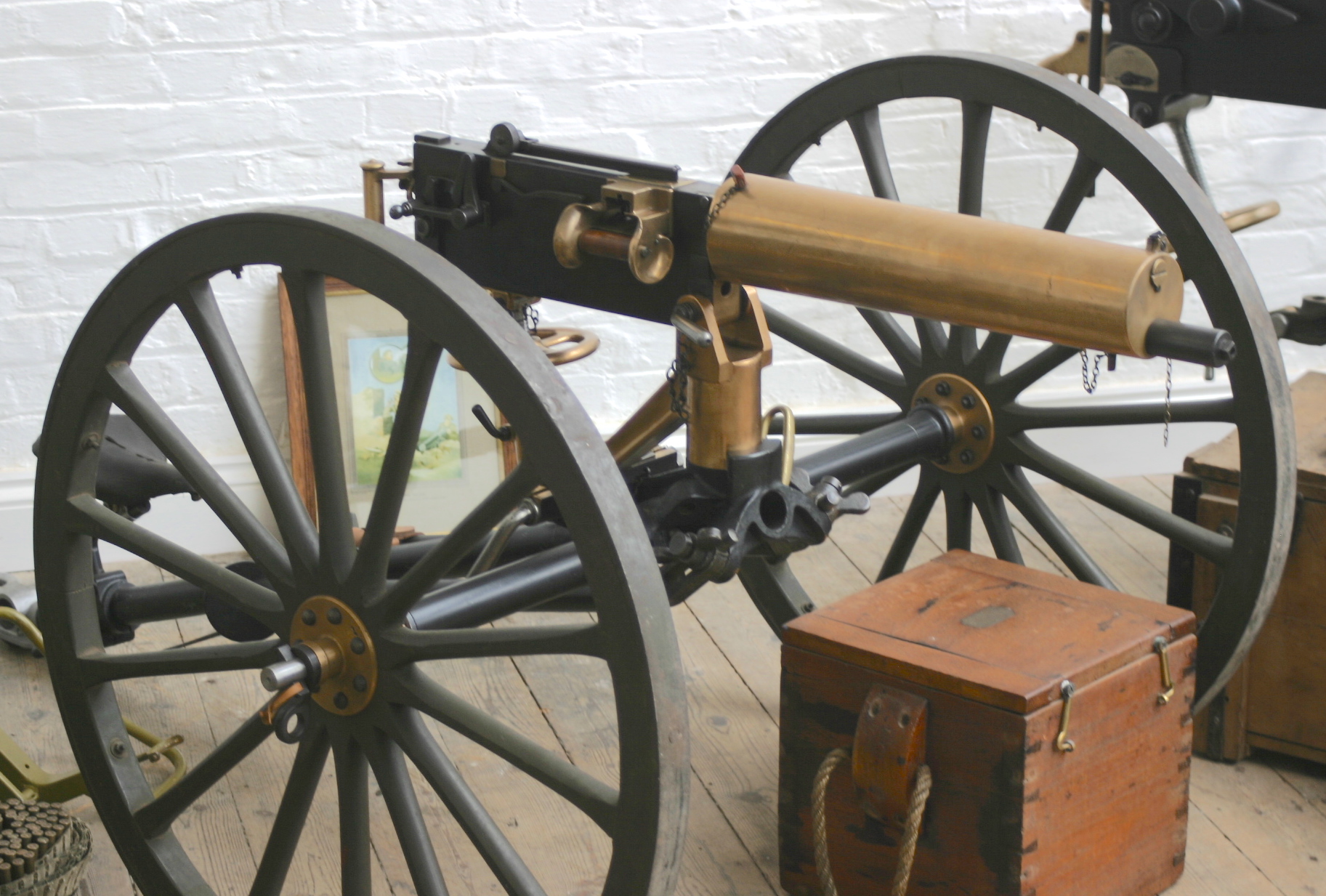Today I am concluding our series on the standard-issue Lee Enfield system with the No5 MkI – the “jungle carbine”. Developed in 1943 as a shorter and handier pattenr of rifle than the No4, the carbine went into production in 1944 and saw use during World War Two. It featured a number of lightening cuts, as well as a shortened barrel, conical flash hider, side-mounted sling, 800-yard sights, and rubber buttpad. Unfortunately, the No5 was beset by a problem of “wandering zero”. A significant number of the rifles failed to properly hold zero when they were widely issued. The problem was never fully resolved, but appears to have been the result of receiver flex due to the lightening cuts. Efforts to fix it were essentially abandoned, as it was recognized that a new self-loading rifle was going to be adopted soon, and it would be a waste of time and money to continue development of the Lee Enfield by that point.
Related Articles

Bolt Action Rifles
Dyer Multi-Caliber Rifle
I received a request from a collector trying to find information on the Dyer International Caliber Rifle. I have been unable to find anything myself, but the fellow did have a pair of technical drawings […]

Shotgun
Fosbery’s Pump Shotgun: An AR15 Bolt in 1891
Armament Research Services (ARES) is a specialist technical intelligence consultancy, offering expertise and analysis to a range of government and non-government entities in the arms and munitions field. For detailed photos of the guns in […]

Heavy MGs
The World Standard Maxim Gun
From 1887 onward, the gun Hiram Maxim was producing was what he called the World Standard. He had finally perfected the machine gun design to his satisfaction in 1887 and with this design in hand […]

Great video sir. Thank you.
Ian, turns out your robotic relatives are quite distracting. Hopefully you can introduce them in a future video, I bet they can take the recoil of the No 5 quite well.
Thank you so much for explaining the precise findings of the wandering zero, as well as the fact that it did not affect all rifles. One wonders if the Brits were so certain about the rear receiver scallops why they simply did not add those few ounces back to the receiver & carry on production – or was it they only suspected that was the problem, but they couldn’t quite nail it down?
so it did exist, but it was also a convenient excuse to ditch it for an em2 or slr.
Imagine those little irons surplussed and sold to an enterprising dealer who could convert them to .280 Enfield. Civilians would have lapped them up even if the zero sometimes went AWOL.
The “wandering zero” was found to be a half myth concocted by SOME soldiers who experienced the problems of barrels and stock-nodes not matching up when final assembly of rifles was done half-baked. The rifle design didn’t produce a “wandering zero.” It was BAD manufacturing that did the thing.
It will definitely leave a mark on your shoulder.
I have a Rifle No. 8 (.22 LR trainer) built in 1949 on a No. 5 receiver.